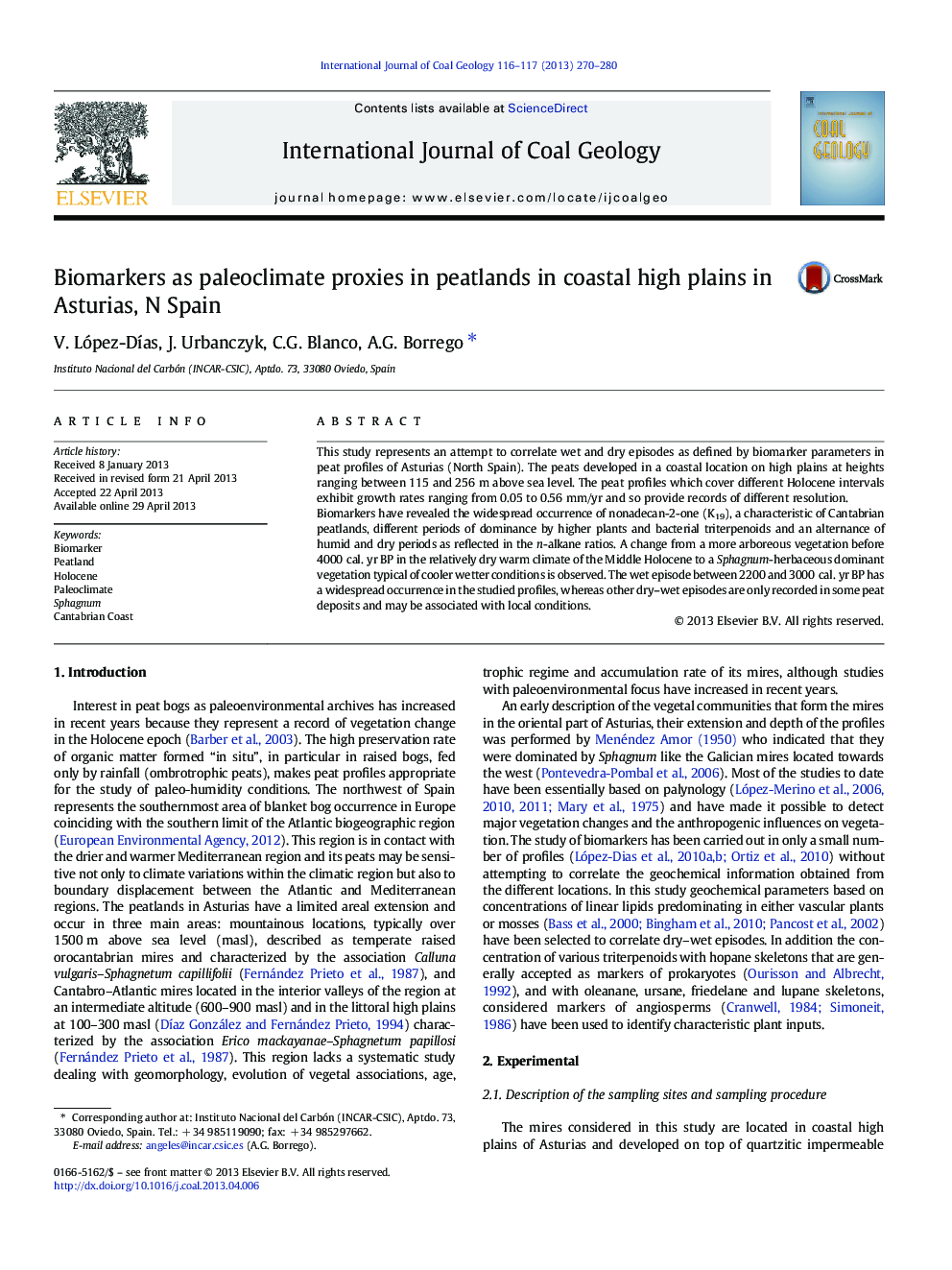| Article ID | Journal | Published Year | Pages | File Type |
|---|---|---|---|---|
| 1753274 | International Journal of Coal Geology | 2013 | 11 Pages |
Abstract
Biomarkers have revealed the widespread occurrence of nonadecan-2-one (K19), a characteristic of Cantabrian peatlands, different periods of dominance by higher plants and bacterial triterpenoids and an alternance of humid and dry periods as reflected in the n-alkane ratios. A change from a more arboreous vegetation before 4000 cal. yr BP in the relatively dry warm climate of the Middle Holocene to a Sphagnum-herbaceous dominant vegetation typical of cooler wetter conditions is observed. The wet episode between 2200 and 3000 cal. yr BP has a widespread occurrence in the studied profiles, whereas other dry-wet episodes are only recorded in some peat deposits and may be associated with local conditions.
Related Topics
Physical Sciences and Engineering
Earth and Planetary Sciences
Economic Geology
Authors
V. López-DÃas, J. Urbanczyk, C.G. Blanco, A.G. Borrego,
